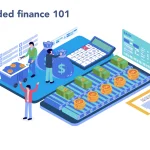
Climate change poses a grave threat to both microprudential regulatory and macroprudential supervisory levels of financial supervision. Financial institutions face both direct physical risks such as increasing frequency and cost of severe weather events as well as transition risks that arise from shifts in consumer and investor demand.
Recognizing these transition risks can speed the pace of divesting from assets that could become stranded and further propel us toward a low carbon future.
Transition Risks
As we move toward zero emissions, new policies and changes to consumer and investor behavior may alter how companies or properties are valued. While such “transition risks” may not receive as much recognition as physical impacts of climate change, their effects may prove far-reaching over time.
An increase in carbon emissions could reduce asset values and raise liability risks for some companies and investors, potentially leading to divestment from fossil-based energy sources such as coal or the rising popularity of renewable technologies such as solar.
Financial institutions are increasingly facing transition risks when making credit allocation decisions. When climate changes cause repeated extreme weather events, this can increase default risk on loan portfolios and decrease asset values – leading to wider economic ramifications such as COVID-19 pandemic or Pacific Gas and Electric’s bankruptcy in 2019. Such stresses on a financial system can hinder funding flows thereby slowing or ceasing business activity altogether.
Physical Risks
After over 10,000 years of relative climate stability, Earth’s changing climate is creating new physical risks, including acute hazards like floods, heat waves and wildfires as well as long-term hazards like ocean acidification and loss of sea ice. Some impacts have the potential to trigger environmental tipping points such as large releases of biological, chemical or radioactive materials from melting permafrost or shifting ocean currents releasing material destined for release into the environment.
These risks pose not only human and environmental danger, but also financial ones for organizations. Droughts and wildfires can wreak havoc on real estate holdings while floods may damage equipment and disrupt supply chains. Climate-related damages to collateral can compromise banks’ credit stability when their loss-mitigating capabilities erode due to climate-related damages. Financial services institutions play an essential role in allocating capital within an economy, channeling savings from savers into productive investments that foster economic expansion. Financial investors can assist the transition towards a sustainable future by assessing and mitigating physical climate risks; engaging with investee companies on decarbonisation of business models; and advocating policies that enable accurate pricing of climate risk in financial markets.
Financial Risks
Climate change brings with it new systemic risks that are increasingly impacting economies worldwide. Should an extreme weather event strike, financial institutions may experience losses that impair existing assets’ values or raise credit costs with higher risk premiums for lending and investing.
Investors must also be cognizant of how policy decisions impact their investments for a sustainable future. Government actions – be they tax incentives, regulations or market design – can have a substantial impact on how quickly we transition towards a net zero carbon economy.
Physical climate risks may be easier to grasp, while transition risks are less predictable. Due to climate change’s delayed and variable effects on businesses and investments alike, it can be hard to anticipate how their operations will need to adapt or what new costs may arise over the lifetime of an investment. This adds more uncertainty regarding its outcomes.
Disclosure
Climate-friendly efforts by many companies often incur an initial expense. For example, installing solar panels on their roof or purchasing green power may affect their bottom line and ESG criteria can result in additional regulations, forcing businesses to write off “stranded assets” like fossil fuels or property located in floodplains that no longer make money.
Climate change’s effects vary by region and are difficult to accurately anticipate. Economic forecasts can be affected by factors like time horizon and discount rate used for estimating impacts versus current consumption levels.
Climate change will disproportionately harm communities of color and the poorest members of society, so any steps toward sustainability must include conversations about environmental racism and inequality.






